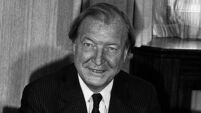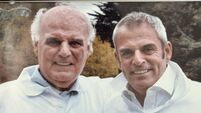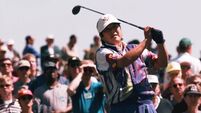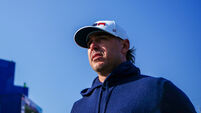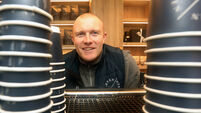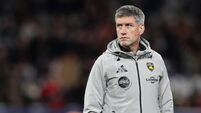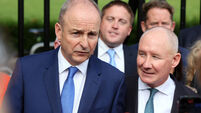From antagonism to Zinger: A-Z of the Ryder Cup

The ill-feeling that is often generated by these matches is not a recent thing: Think Seve v Azinger at Kiawah Island in 1991, when Azinger called Ballesteros the “king of gamesmanship” and Ballesteros retorted: “The Americans have 11 nice guys … and Paul Azinger.”
Even in the year of the famous ‘Concession’ (1969) there was considerable animosity between the teams when the GB&I captain, Eric Brown, instructed his players not to help their opponents look for balls in the rough. No, the needling that exists is now simply a part of the event.
(See also A above). The constant needling that takes place between the two teams certainly came to a head at Brookline, in 1999, when the American team rampaged across the 17th green following Justin Leonard’s remarkable 45-foot putt… completely ignoring Leonard’s European opponent, Olazabal, who still had the opportunity to halve the hole. The incident and the match in general led to Mark James, the European captain, writing his book, Into the Bear Pit, which indicated general ill-will between Europe and the USA.
Royal Birkdale, 1969. In one of the greatest shows of sportsmanship in Ryder Cup history and, in golf itself, Jack Nicklaus conceded a three-foot putt to Tony Jacklin on the 18th green to halve his match in the final day singles matches… and halve the match overall. Since then that gesture of sportsmanship has been hailed the world over but, at the time, Jack’s team and his team captain, Sam Snead, were furious with the 29-year-old rookie.
Jose Maria Olazabal’s jig on the 18th green at Muirfield Village (see M below), following Europe’s victory in 1987, is the moment when the Ryder Cup got serious. It was Olazabal’s debut and it was also the first time the Americans had lost on home soil.
As the 1977 Ryder Cup approached, the USA had won 17 of the 21 matches played against the GB&I team. American TV showed no interest in broadcasting such a one-sided event and there was a fear the Ryder Cup might fizzle out. Jack Nicklaus, the world’s best golfer at the time, played an important part in expanding the GB&I team into a European one. In 1977, at Royal Lytham, he suggested this expansion would make the event more competitive and ensure its prestige. Others (PGA) agreed and the changes to include continental European countries were approved by descendants of the Samuel Ryder family. In 1979, the first ever European team, which included Seve Ballesteros, played in Western Virginia. Europe lost 17-11 but it ushered in a new era.
He may be Europe’s most successful Ryder Cup player of all time, but his captaincy at Valhalla in 2008 was laced with tactical errors — he backloaded the singles with his best players, allowing the USA to run away with the final day early on.
USA won 16½-11½. It is the only European loss in the teams’ last seven meetings.
Jack Nicklaus had a long and impressive Ryder Cup history. He played in the event six times, with the USA winning on five occasions and drawing once… which was in 1969, following the now famous concession (see C above). He played 28 matches, claiming 18½ points. Nicklaus captained the USA team twice, winning the first in 1983, and losing to Tony Jacklin in 1987.
Ben Hogan gave one of the most memorable ripostes when he was the USA captain, in 1967. After listening patiently as the GB&I captain, Dai Rees, introduced each member of his team, listing each and every one of their achievements, Hogan simply asked his team to stand, read out the names and then said: “Ladies and gentlemen, the United States Ryder Cup team… the finest golfers in the world.”
The crowd at Champions Golf Club in Houston erupted and the tone for the match was set. The USA won 23½-8½.
Of all the many achievements — Walton’s winning putt, Christy’s two iron, GMac’s fireworks at Celtic Manor, Darcy’s win over Crenshaw at Kiawah Island, McGinley’s 2008 performance and 2014 captaincy — perhaps the most startling contribution comes from two Irish golf clubs. Both Delgany and Balmoral have each contributed four Ryder Cup players… something no other club in Europe or the USA can match. Delgany gave us Harry Bradshaw, Jimmy Martin, John O’Leary and Eamonn Darcy; Balmoral gave us Fred Daly, David Feherty, Eddie Polland and Norman Drew.
In 2006 the K Club showed that even when competition is at its highest there are moments when everyone comes together. The roar which greeted Darren Clarke as he arrived on the first tee, six weeks after his wife had died of cancer, remains one of the defining moments in Ryder Cup history, demonstrating how the Irish adore their sporting heroes. Not only did Clarke birdie that first hole, he also won all three of his matches as Europe routed USA 18½ to 9½.
Nick Faldo leads the way in almost every category: He has made the most appearances (11), played the greatest number of matches (46), won the most matches (23), won the most points (25), and won the most singles matches (six). This week Phil Mickelson will become the first American player to make 11 appearances.
He already holds the record for the most matches played (41) although he is only fifth in terms of most points won (behind Billy Casper’s 23½ pts), Phil is also second (to Jim Furyk) in terms of most matches lost, as well as topping the table with most singles matches lost (five).
On a more positive note, he has played the most four ball matches (17) and has the highest number of American wins (seven). Ian Poulter has the best winning percentage of any European player, with stats of 12-4- 2 — or 72% — from his 17 matches. His stats just pip Arnold Palmer, the leading American, who has a record of 22-8-2 from his 32 matches.
In 1987, the Ryder Cup was played in Ohio. Following a comprehensive victory in 1985, Europe came with high expectations of their first ever victory on American soil. The visitors started well over the first two days leaving the US team to make up considerable ground in the final day singles.
Europe held on to win, 15-13, but one of the key moments came when Ben Crenshaw snapped his putter early on in his match against Eamonn Darcy, and ended up using either his one iron or sand wedge on the greens. Darcy won on the final hole.
In all, 19 Irish players have competed in the Ryder Cup. Hugh Boyle (one appearance), Harry Bradshaw (three), Darren Clarke (five), Fred Daly (four), Eamonn Darcy (four), Norman Drew (one), David Feherty (one), Pádraig Harrington (six), Jimmy Martin (one), Graeme McDowell (four), Paul McGinley (three), Rory McIlroy (three), Christy O’Connor Junior (two), Christy O’Connor Senior (10), John O’Leary (one), Eddie Polland (one), Ronan Rafferty (one), Des Smyth (two), Philip Walton (one).
He was a captain’s pick in 1989, but he became part of Ryder Cup folklore when his sublime two-iron approach to The Belfry’s 18th hole rolled to a few feet. It won him the match (1 up) against Fred Couples and proved a pivotal moment in Europe retaining the cup that year. Christy Senior, meanwhile, played in the Ryder Cup 10 times (second only to Faldo’s 11) between 1955 and 1973. He played 36 matches and even though 21 of those were losses, this was at a time when the Great Britain & Ireland team were being beaten. Himself was on the winning team only once (1957).
For those wishing to purchase Ryder Cup merchandise in 2016, you will need deep pockets. The replica waterproof outfit by Galvin Green will set you back €900, a golf hat can cost as much as €66, while polo shirts start at €45 and rise to over €100. Remember, the players don’t get paid for representing their country/continent.
Not something you will ever hear at a Ryder Cup.
While the idea of a match between US and British golfers dates back to 1920, it wasn’t until 1926 that the event took shape, with Samuel Ryder donating a cup for the victors. The American team was picked by Walter Hagen and while it wasn’t officially called the Ryder Cup, the format of matchplay foursomes and singles had taken shape.
The first official ‘Ryder Cup’ was the following year, at Worcester Country Club, in Massachusetts, with the PGA organisations of each country selecting the players. The original 10 players per team grew to 12 in 1969. The GB team officially became GB&I in 1973 — even though Irish players had been on the team since 1953 — and became Europe in 1979.
He was one of America’s good guys. A fierce competitor but also a great sportsman. He showed his true colours in 1999, when conceding a long putt to Montgomerie in the final day singles. The USA had already won the cup by the time Stewart and Monty reached the 18th, and, knowing that Monty had endured a torrid week at the hands of rowdy American fans, Stewart decided to let it go no further, saving the Scot from defeat. It is a powerful reminder of how the Ryder Cup should be played, made all the more potent by Stewart’s death less than a month later.
He is the greatest player of the modern era but the Ryder Cup has not been a happy hunting ground. He has won just 13 of the 33 matches he’s played. Of his seven Ryder Cup appearances, the USA won only once (1999).
Vahalla, in Kentucky, was the setting for yet more contentious encounters. Paul Azinger, the USA captain, rallied support from spectators by printing 13th-man shirts to indicate that fans were part of the team. Lee Westwood took a dim view and even had one boisterous spectator ejected. He criticised Azinger for inciting such poor behaviour, and added that he had received a post-midnight call to his hotel room with someone wishing him “good luck.”
An estimated 500 million viewers in 183 countries watched the 2014 Ryder Cup on TV, while over five million watched through Sky’s website and mobile apps. This latter figure is an increase of 63% on the 2012 event and indicates how viewing patterns are changing.
For the 2016 event, the combined world rankings for Europe’s 12 players is 323… the USA’s is considerably lower, at just 203. On paper, it should be a no-brainer for a USA victory… in reality, would you bet against Europe making it four in a row?
Europe’s victory in 2012, at Medinah, in Chicago, showed once again what an incredible event the Ryder Cup can be and what kind of role an individual golfer can play. And yes, we mean Ian Poulter.
Two down with five to play, he reeled off five consecutive birdies to win his second day four ball match with McIlroy. Rory could only watch and admire as Poulter single handedly created the fireworks (and theatrics) to galvanise a poor performing European team, which was in danger of being squashed by the USA. The following day, trailing 10-6 going into the singles, Europe won 8½ points of a possible 12, with Martin Kaymer sinking the winning putt. That year’s Ryder Cup became known as the Miracle of Medinah.
Given how vociferous American fans have become — and unruly on occasions — the 2016 event at Hazeltine may well have some zoo-like qualities.
Mashed Potatoes will be in plentiful supply.
Don’t feed the animals!



